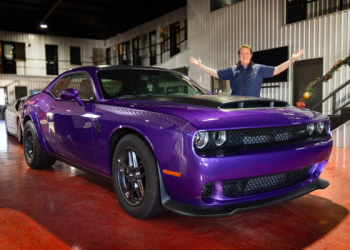The latest crash test ratings from the Insurance Institute for Highway Safety (IIHS) reveal that most small pickups fall short in protecting passengers seated in the rear.
Specifically, none of the five small crew cab pickups tested earned a good rating in the updated moderate overlap front crash test, which now includes a second dummy positioned in the rear seat behind the driver.
Rear-Seat Safety Challenges:
According To David Harke, IIHS President, the updated moderate overlap front crash test proved challenging for small pickups.
A common issue observed was the rear passenger dummy’s head coming dangerously close to the front seatback, posing a risk of neck or chest injuries.
These findings highlight the need for improvement in rear seat belts to enhance passenger safety in small pickups.
Test ratings result and analysis:
Among the tested vehicles, none earned a good rating, with the Nissan Frontier achieving an acceptable rating.
The Ford Ranger received a marginal rating, while the Chevrolet Colorado, Jeep Gladiator, and Toyota Tacoma were rated poor.
It’s important to note that these ratings apply specifically to the crew cab versions of the pickups.
Rear-seat protection initiative:
The IIHS introduced the updated moderate overlap front crash test to address research findings indicating a higher risk of fatal injuries for rear-seat occupants in newer vehicles compared to those in the front.
The focus of the test is to encourage manufacturers to enhance rear-seat protection.
To evaluate this, a second dummy is placed in the back seat behind the driver, simulating the size of a small woman or a 12-year-old child.
Evaluation metrics and criteria:
For a vehicle to achieve a good rating, the second-row dummy should not experience excessive risk of head, neck, chest, or thigh injuries.
The dummy should remain properly positioned during the crash, without sliding forward beneath the lap belt (submarining).
The head should also maintain a safe distance from the front seatback and the rest of the vehicle interior. Additionally, measurements from the driver dummy should not indicate an excessive risk of injuries.
Analysis of small pickups:
While all five small pickups demonstrated good protection in the front seat, concerns arose in the rear seat.
The rear dummy’s head in the Colorado, Frontier, Ranger, and Tacoma came too close to the front seatback, indicating inadequate rear restraints.
However, the Gladiator’s rear restraints were not problematic in this regard. Nonetheless, the Gladiator lacks a side curtain airbag, increasing the risk of injury in the event of a hard impact.
Conclusion:
The IIHS crash test ratings shed light on the rear-seat safety challenges faced by small pickups.
The findings emphasise the need for improved rear seat belt systems to safeguard passengers.
It is crucial for manufacturers to address these concerns and enhance rear-seat protection to ensure the overall safety of small pickups.
By doing so, they can contribute to the reduction of injuries and fatalities in motor vehicle crashes, ultimately creating a safer transportation environment for all road users.
Three facts to know about IIHS crash ratings and their impact on vehicle safety:
1. Independent Nonprofit Organization:
The IIHS is an independent, nonprofit organization committed to enhancing vehicle safety and reducing the impact of motor vehicle crashes. It operates independently of the government and automotive industry, ensuring unbiased research and evaluation of crash ratings.
2. Evaluating Vehicle Safety:
A significant role of IIHS is to conduct extensive crash tests and evaluate the safety performance of vehicles. Through rigorous testing, they determine how well vehicles protect occupants in various crash scenarios.
Their renowned “IIHS crash ratings,” including “Top Safety Pick” and “Top Safety Pick+,” guide consumers in making informed decisions when choosing a safe vehicle.
3. Advocacy and Education:
Beyond research and evaluation, IIHS actively advocates for policies and regulations that promote vehicle safety. They collaborate with policymakers, safety professionals, and the public to raise awareness about the significance of safe vehicles and the importance of considering IIHS crash ratings when purchasing a car.
By focusing on IIHS crash ratings, the organization continuously strives to improve vehicle design, encourage the implementation of advanced safety technologies, and ultimately enhance road safety for everyone.








![Nissan GT-R [Source autoevolution]](https://autojournal.africa/wp-content/uploads/2025/08/Nissan-GT-R-Source-autoevolution-350x250.png)












